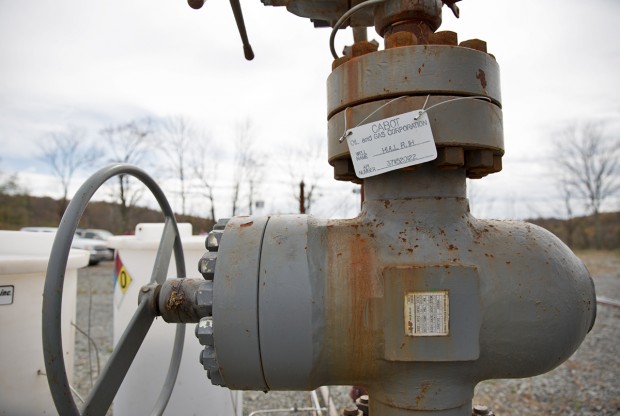Can the Marcellus keep up its massive production?
-
Marie Cusick

Lindsay Lazarski / WHYY
Cabot Oil & Gas operations in Susquehanna County include some of the most productive wells in the state.
Energy and Environment takes a look at whether the recent surge in gas production from the Marcellus Shale is a vision of the future, or the peak of the production curve.
From E&E:
In 2013, faced with a second year of weak natural gas prices, oil and gas companies continued to cut costs and coax fossil fuels out in new ways. Phrases like “manufacturing-style development,” “harvest mode” and “managed shale” became industry staples, while the “land-grab” era took on the past tense.
“The idea of drill a well, go to another well, drill a well, go to another well, has evaporated,” said Greg Powers, Halliburton Co.’s vice president of technology. “People drill multiple wells from a pad now … our foresight was, ‘make this like factory production for our customers.”
Today the leading service companies, including Halliburton, routinely apply the factory approach. And for the near term, the proof appears to be in the pudding.
The article points out that the federal Energy Information Administration (EIA) projects that shale plays across the country will be more productive this year than they were last year.
But some think production could be reaching a peak level:
That’s a real concern for David Hughes, a fellow at the Post Carbon Institute who worked at the Geological Survey of Canada for 30 years. Among his focus areas: unconventional gas.
“There may be small, incremental further gains in terms of reducing the cost of wells, but I think the biggest gains have already been had, in essence,” he said. “The writing’s on the wall. It’s only a question of time before they become saturated with wells and drilling has to move out into poorer-quality parts of the reservoir.”
Pennsylvania’s gas production numbers for the second half of 2013 will be released later this month. The EIA is projecting that Pennsylvania will become the second largest natural gas producer in the nation, behind Texas.
















